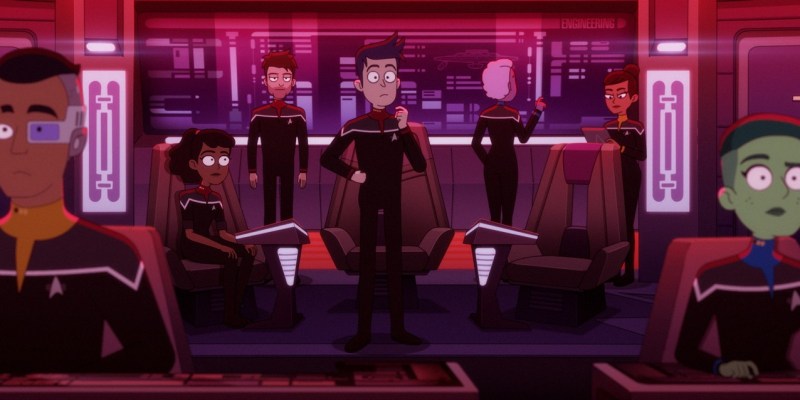This discussion and review contains spoilers for Star Trek: Lower Decks season 3, episode 8, “Crisis Point 2: Paradoxus.”
“Crisis Point 2: Paradoxus” might not reach the heights of either the original “Crisis Point” or last week’s “A Mathematically Perfect Redemption,” but it is still a worthy addition to the “Vindicta-verse” and to Lower Decks. A little rougher around the edges than its predecessor, the episode finds Lower Decks returning to one of the show’s central preoccupations and a reliable source of material: the relationship between fan and franchise.
There is perhaps an argument to be made that Lower Decks works better as a show about Star Trek fandom than it does as a Star Trek show. Certainly, the way that its characters talk about the universe they inhabit makes more sense as fans affectionately and enthusiastically discussing a fictional universe than it does as Starfleet officers discussing current affairs. In an era where so much media is built around fandom, this is a perfectly valid approach.
Like the original “Crisis Point,” “Crisis Point 2: Paradoxus” is obviously a spoof of the Star Trek film franchise and the somewhat strained relationship that those films have to the television show. Once again, there’s a lot of fun in watching the animated series adopt the visual language of the Star Trek films: epic space battles, super widescreen, film grain, lens flare, and even simulated camera tricks like the use of shifting depth of field to suggest a more sophisticated cinematic sensibility.
Of course, allowing for significant allusions to The Voyage Home and The Final Frontier, “Crisis Point 2: Paradoxus” is obviously modeled on Generations. The three Romulan Sisters (credited in the on-screen script simply as Left, Center, and Right) are clearly an escalation of the two Duras Sisters (Barbara March and Gwynyth Walsh), right down to their gratuitous cleavage windows. The Chronogami “MacGuffin” is a riff on trilithium, itself an escalation on dilithium.
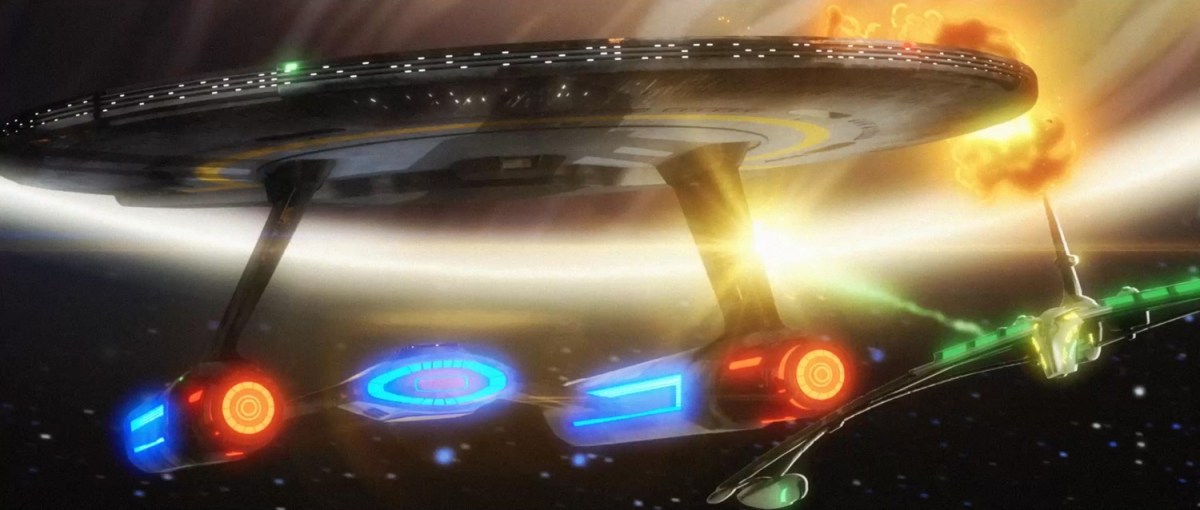
The episode borrows specific cues from Generations, such as the distinctive lighting choices and the bridge crew cheering the destruction of an enemy ship. Like Picard (Patrick Stewart) in Generations, Boimler (Jack Quaid) visits a representation of the Kirk farm in a liminal space. It is interesting to wonder if “Crisis Point 2: Paradoxus” tried to cast Shatner for that encounter on “the third moon of Shatanari” but couldn’t meet his fee. It wouldn’t be the first Star Trek spinoff to face that issue.
If this is the case, the decision to feature George Takei as Hikaru Sulu feels deliberately pointed. After all, Shatner and Takei have a very contentious shared history. Having Sulu inherit Kirk’s ranch is a delightfully cheeky decision. Speaking completely hypothetically, this might explain Shatner’s aggressive comments about the modern Star Trek franchise at Comic-Con. William Shatner is not somebody to bury a grudge. This is pure speculation, but it’s fun to think about.
However, the most important parallel between “Crisis Point 2: Paradoxus” and Generations exists outside Boimler’s holodeck simulation. Early into the adventure, Boimler is summoned to a meeting with Ransom (Jerry O’Connell). Ransom later explains to Mariner (Tawny Newsome) that Boimler’s transporter “twin” William (Quaid) died in a “freak gas leak.” Boimler spends the rest of the episode trying to grapple with the “meaninglessness” of William’s death within a blockbuster film.
This deliberately echoes one of the more interesting aspects of Generations. Like the other three Next Generation movies, Generations is a big science fiction blockbuster. However, it’s also oddly personal. Early in the story, Picard receives word that his brother (Jeremy Kemp) and nephew (Christopher James Miller) died in an accidental fire. This is the end of his family, making him the last living Picard. This casts an obvious shadow over the high-stakes space adventure that follows.
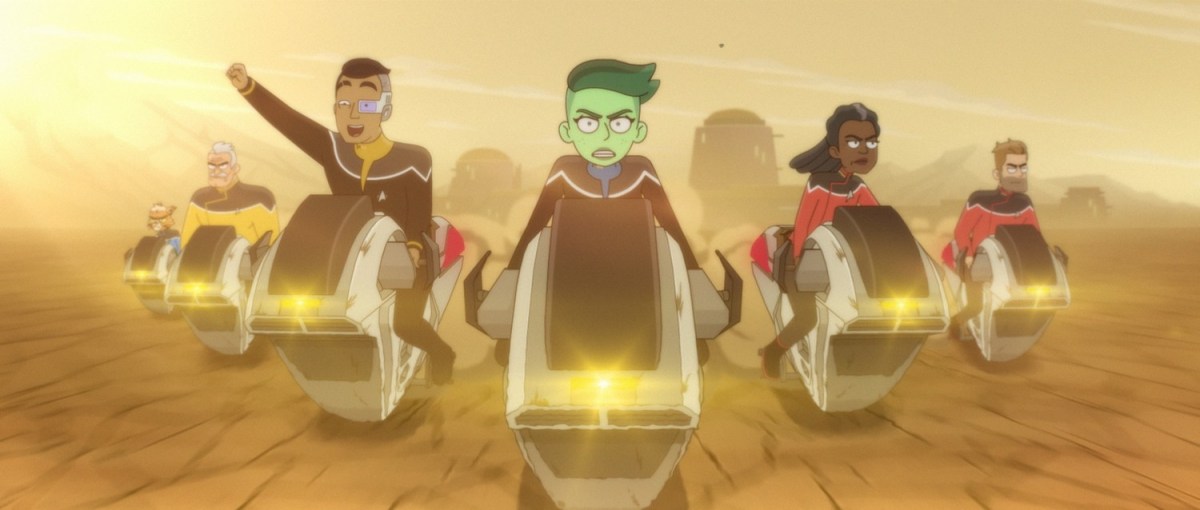
Generations is, to put it frankly, an imperfect movie. At least part of this is down to the difficulty the film has balancing its tone. Picard’s loss is unimaginable and Stewart’s performance is heartbreaking, but the rest of the movie wants to be a thrilling summer movie. Generations feels very much like a movie at odds with itself. Writers Brannon Braga and Ronald D. Moore are candid about the issues with Generations, with Moore lamenting that they failed “to bring that one home.”
“Crisis Point 2: Paradoxus” plays as a thoughtful and considered meditation on Generations. The bulk of the episode is given over to a conflict between Mariner and Boimler about the creation of the in-universe holodeck program Crisis Point 2: Paradoxus, but it feels like a proxy argument over Generations. Mariner insists that it is a “bad movie” that “goes against everything the Vindicta-verse stood for” and is “ruining (her) franchise.” Boimler counters that he is creating “an important examination of the human condition.”
“Crisis Point 2: Paradoxus” is direct about what it is doing. Mariner describes the movie as “fan fiction,” while the description “Starfleet movie” is an obvious stand-in for “Star Trek movie.” As such, “Crisis Point 2: Paradoxus” is engaged in an active discussion about what it means to be a fan and how fans should approach the media that they love. It is a piece of criticism that is exploring both Generations specifically and the idea of art more broadly.
If these franchises must become a hall of mirrors for fandom, they should at least meaningfully engage with the media to which they are devoted. Lower Decks can occasionally fall victim to the same trap that ensnares Strange New Worlds, mindlessly regurgitating familiar Star Trek tropes with little consideration or insight. Both “Crisis Point” and “Crisis Point 2: Paradoxus” work in large part because they actively engage with their objects of study rather than simply recycling iconography.
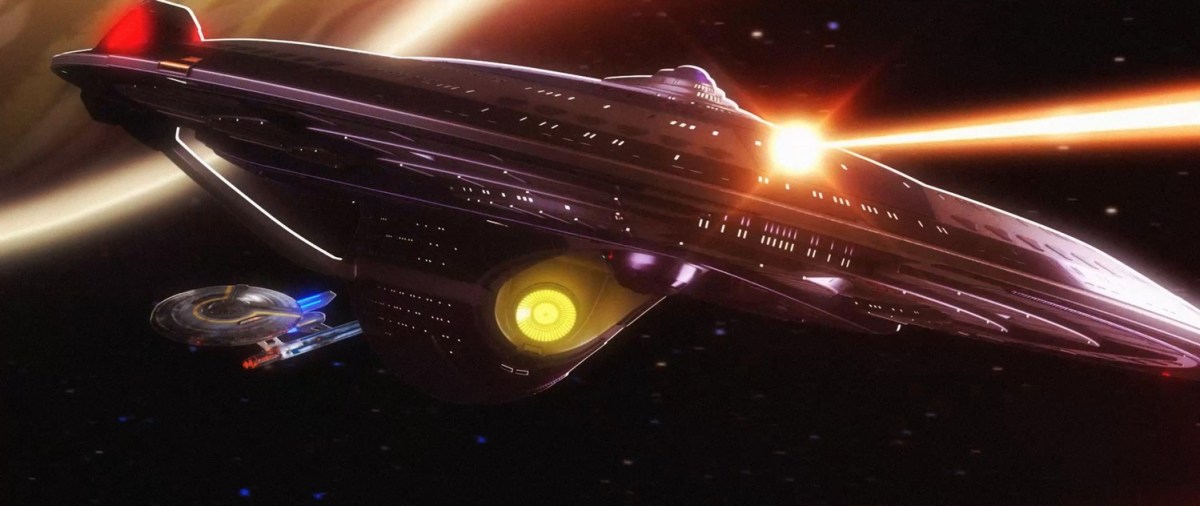
In a moment of personal crisis, trying to make sense of the arbitrary death of his transporter clone, Boimler looks to his story for answers. It’s something that many fans can undoubtedly understand. After all, what is art but an attempt to discern some truth from the chaos of living? That can be true of any piece of art. Mariner initially rejects this idea but comes to accept it. “I found deeper meaning in Rise of Vindicta, and it was totally unscripted,” she admits at one point.
It’s a profoundly human idea and a commendably lofty one for a Star Trek spinoff that positions itself as a half-hour sitcom. It’s certainly a much more graceful handling of the concept than something like Strange New Worlds’ “The Elysian Kingdom.” More than that, “Crisis Point 2: Paradoxus” maintains a deliberate ambiguity about where meaning comes from. Does it derive from the work itself, or the audience’s response to it? Boimler’s epiphany comes during a hallucination, after all.
That said, the episode is somewhat undermined by the stinger reveal that William Boimler actually survived and faked his own death. While that is both winkingly foreshadowed in dialogue and an obvious allusion to the end of The Wrath of Khan, it undermines the emotional journey of the episode to that point. It also singlehandedly prevents “Crisis Point 2: Paradoxus” from measuring up to either “Crisis Point” or “A Mathematically Perfect Redemption.”
It is also somewhat frustrating that this sort of introspection and analysis is reserved for low-hanging fruit like the Star Trek feature films. If Lower Decks is, at least in part, a show about engaging with Star Trek as a fan, it might be worth turning that critical eye to other Star Trek tropes. It would be interesting to see Lower Decks deconstruct the privileged angst of stories like “Lift Us Where Suffering Cannot Reach” or the hollow allegory of episodes like “The Serene Squall.”
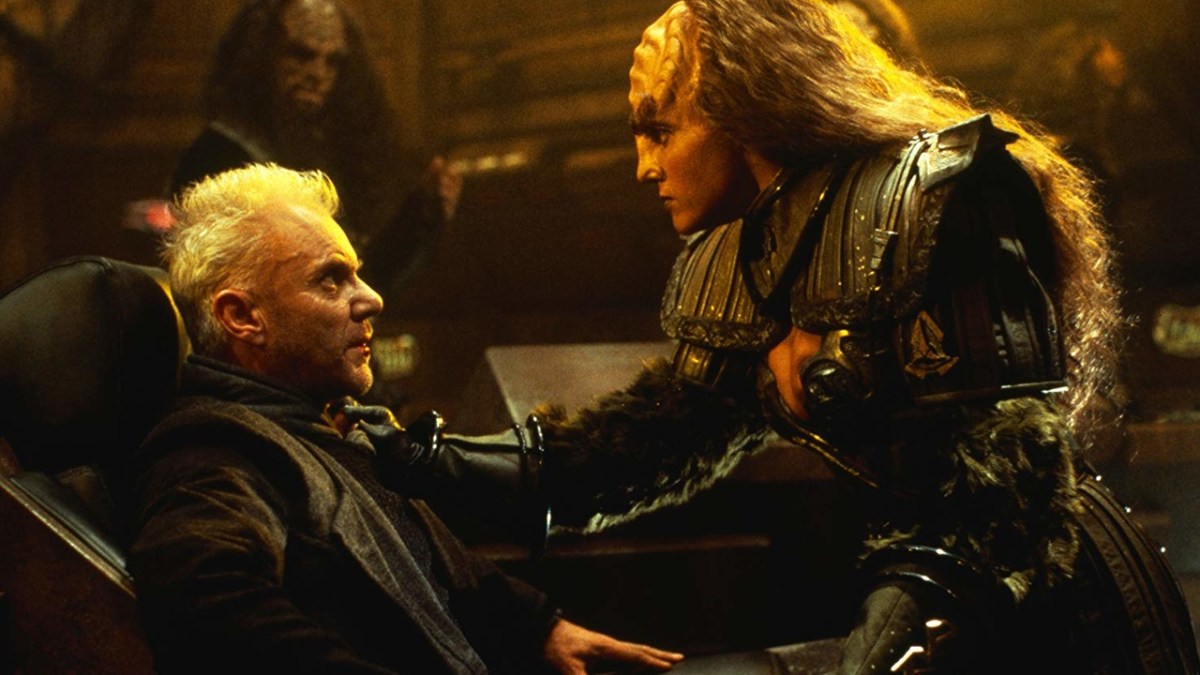
Still, just as with his script for the original “Crisis Point,” writer Ben Rodgers structures the teleplay remarkably well. That idea of tension between fans about how best to interpret franchise media is cleverly layered through the story. Tendi (Noël Wells) and Rutherford (Eugene Cordero) have their own argument about the best way to watch a Star Trek movie. Tendi insists that it is serious business. Rutherford is more about enjoying the experience on its own terms.
Tendi and Rutherford’s plot doesn’t end as satisfactorily as the arc with Boimler and Mariner. Tendi’s plot ends with the revelation that she wants to be a captain, explaining why she is taking the holonovel so seriously, but never acknowledges that Rutherford’s engagement with the story is just as valid. Fan fiction (and media in general) can serve as a means of validation like it does for Tendi, but also as a means of fun escapism like it does for Rutherford.
To be fair, it is also something of a cliché for the unassumingly naïve and timid young officer to become a captain. It’s similar to the strange arc that the Deep Space Nine tie-in novels gave to Ezri Dax (Nicole De Boer), making her the captain of the USS Aventine. While Lower Decks has set this up in episodes like “Grounded” and “Mining the Mind’s Mines,” it still feels oddly cynical. It plays as a calculated and pandering bit of wish fulfillment for those similarly shy fans in the audience.
“Crisis Point 2: Paradoxus” is a fun and thoughtful companion piece to the original “Crisis Point,” as well as an illustration of how Lower Decks’ preoccupation with fandom can lead to interesting discussions about the franchise in general. Undermined by a few clumsy choices in the third act, it may not be quite as good as the original. Then again, sequels rarely are.
